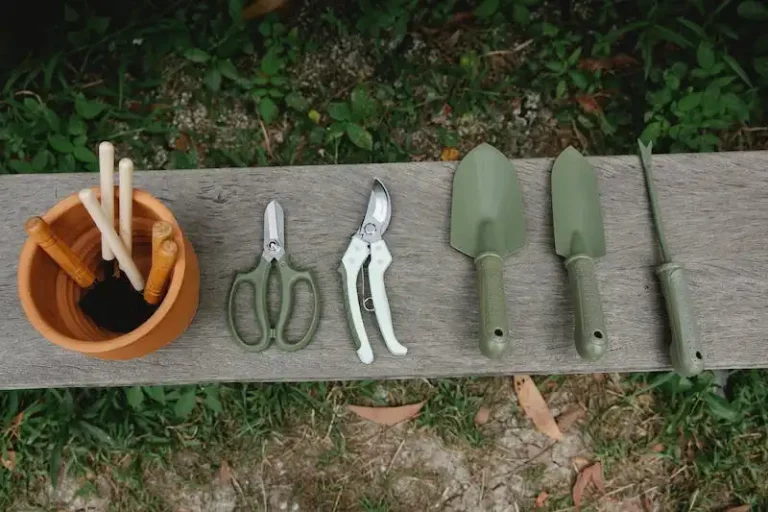If you are looking for a low-maintenance and beautiful plant to take care of, then snake plants are the perfect choice for you. Also known as Sansevieria, these plants are not only decorative but also have a number of benefits that make them a statement piece in any garden or collection.
Snake plants are drought-resistant, which means they can thrive even during the winter months when watering can be less frequent. Their long, spear-like leaves come in multiple types and colors, ranging from bright green to darker shades like blue or black. Some varieties, such as Sansevieria Laurentii or Sansevieria Masons Congo, have vibrant coloring and patterns that can improve the overall aesthetic of your home. They are essentially succulents, which makes them perfect for those who may not have a green thumb but still want to nurture a plant.
According to a study by NASA, snake plants are excellent air purifiers. They can remove toxins like formaldehyde and xylene from the air, which are commonly found in household products and can be harmful to humans. They also release oxygen at night, making them a great addition to your bedroom as they improve air quality while you sleep.
Snake plants are also pet-friendly, as they are not toxic to cats or dogs. This is especially important for cat owners who may have experienced their furry friends nibbling on their plants. The height of snake plants can vary, with some growing as tall as 12 feet, while others stay shorter at around 8 inches. This versatility allows them to be arranged together in a garden or displayed individually in smaller spaces.
One of the rarest snake plant varieties, Sansevieria Trifasciata, also known as “mother-in-law’s tongue,” has long, linear-lanceolate leaves that are striped with lighter shades. It is a popular choice for those looking for a unique and eye-catching plant. Another popular choice is Sansevieria Cylindrica, also known as the “bowstring hemp,” which has shorter and cylindrical leaves. The Sansevieria Longiflora is another rare variant that features striking white flowers.
Caring for snake plants is relatively easy. They prefer well-draining soil and should be placed in a sunny spot. Watering should be done sparingly, as snake plants are drought-resistant and can tolerate long periods without water. They also do well in low-light conditions, although their growth may be slower. Overall, snake plants are a great addition to any home, providing both aesthetic appeal and numerous health benefits.
10+ Snake Plant Varieties for Indoors + Care Tips FAQs
Snake plants, also known as Sansevieria, are a popular choice for indoor plants due to their soft and structured leaves. With over 10 varieties available, these stunning succulents can thrive indoors and add an aesthetic touch to any home or workplace.
One of the most common snake plant varieties is the Sansevieria trifasciata, also known as the mother-in-law’s tongue. This variety can grow up to 6 feet in height and is known for its long and narrow leaves.
Another popular variety is the Sansevieria liberica, which has lanceolate leaves arranged in a back and forth manner. This variety can grow up to 12 feet in height and is native to India.
The Sansevieria cylindrica is another unique snake plant variety. Its leaves grow in a cylindrical shape, hence the name. This variety is native to Kenya and can grow up to 6 feet in height.
The Sansevieria ehrenbergii is a stunning snake plant variety with panicle-like flowers. Its leaves are narrow and star-shaped, giving it a unique look. This variety can grow up to 2 feet in height.
If you’re looking for a snake plant variety that is easier to care for, the Sansevieria parva is a great choice. This variety requires less watering and can tolerate low light conditions. Its leaves are shorter and wider compared to other varieties.
Another low-maintenance variety is the Sansevieria patens ‘Laurentii’, also known as the star snake plant. This variety has long and wide leaves with yellow edges, adding a pop of color to any room.
The Sansevieria hyacinthoides is a unique variety with twisted leaves that resemble a hyacinth flower. It requires bright, indirect sunlight and can grow up to 3 feet in height.
If you want a snake plant variety with a more compact growth habit, the Sansevieria ballyi ‘Whitney’ is a great choice. This variety has short leaves and stays small, making it perfect for small spaces.
The Sansevieria singularis is a rare variety with narrow leaves that grow in a rosette pattern. It can tolerate lower light conditions and requires less watering.
For snake plant lovers who enjoy a touch of color, the Sansevieria ‘Moonshine’ is a great choice. This variety has silvery-green leaves that add a unique touch to any space.
In addition to their stunning appearance, snake plants are essential for indoor spaces due to their ability to purify the air. According to a study by NASA, snake plants are effective in removing toxins such as benzene and formaldehyde from the air.
When it comes to caring for snake plants, they are relatively low maintenance. They can tolerate a wide range of temperatures, although they prefer temperatures between 70-90°F. Snake plants also prefer well-draining soil and should be watered sparingly. It’s best to let the soil dry out between watering to prevent root rot.
Whether you’re a beginner or an experienced indoor gardener, snake plants are a great addition to any collection. With their wide variety of types and easy care requirements, you can enjoy the beauty and benefits they provide in any space.
Here are some frequently asked questions about caring for snake plants:
1. How often should I water my snake plant?
2. Can snake plants tolerate direct sunlight?
3. How tall can snake plants grow?
4. Are snake plants toxic to cats?
5. Can snake plants be grown indoors?
6. What is the ideal temperature for snake plants?
7. How often should I fertilize my snake plant?
8. How do I propagate snake plants?
9. When do snake plants flower?
10. What are the benefits of having snake plants indoors?
11. Do snake plants attract birds or bees?
12. Where should I place my snake plant in my home or workplace?
Also Check Out
If you’re interested in snake plants, you may also like these types:
- Sansevieria patens: This snake plant is known for its unique blue-gray coloring and linear-lanceolate leaves. It can tolerate low light levels and doesn’t need frequent watering.
- Sansevieria masoniana: Also known as the “whale fin” snake plant, its leaves create a unique shape that resembles a whale’s fin. It’s a rare plant and may be harder to find.
- Sansevieria bacularis: This snake plant has cylindrical leaves with a reddish edge, making it an eye-catching addition to any space.
- Sansevieria trifasciata: The “snake plant” or “mother-in-law’s tongue” is one of the best-known types. It’s easy to care for and can tolerate different light levels. It’s also known for its air purification properties.
- Sansevieria canaliculata: This snake plant has narrow, channel-shaped leaves with beautiful green and silver coloring. It’s a great choice for indoor spaces with low humidity.
- Sansevieria fischeri: This snake plant has small, soft leaves with a unique, delicate pattern. It’s a great choice for smaller spaces or as part of a succulent collection.
- Sansevieria concinna: Also known as “mother-in-law’s tongue,” this snake plant is valued for its soft, sword-shaped leaves and unique coloring. It’s easy to care for and can tolerate different light levels.
- Sansevieria ballyi: This snake plant is known for its compact size and unique rosette shape. It doesn’t require frequent watering and can tolerate dry soil.
- Sansevieria parva: Also known as the “Kenya hyacinth,” this snake plant has slender leaves that are typically green but can develop reddish shades during the summer. It’s a great choice for adding some color to your indoor space.
Each of these snake plant types has its own unique characteristics, so make sure to choose the one that’s right for you and your home. Remember to follow general care guidelines for snake plants, such as well-draining soil, infrequent watering, and occasional fertilization.
12 Popular Snake Plant Varieties for Indoor Growing
Snake plants, also known as Sansevieria, are a popular choice for indoor gardening because they are easy to care for and can thrive in low-light conditions. With their unique patterned leaves and tolerance for neglect, snake plants make a perfect addition to any indoor garden. Here are 12 popular varieties of snake plants that you can nurture indoors:
1. Sansevieria ballyi: This dwarf snake plant tolerates low light and is perfect for small indoor spaces.
2. Sansevieria masoniana: Also known as the “Whale’s fin” or “Shark’s fin,” this snake plant has large, paddle-shaped leaves and can grow up to 13 inches tall. It is best known for its marbled pattern.
3. Sansevieria trifasciata: The snake tongue plant is one of the best-known varieties of snake plants. It is a low-maintenance indoor plant that can tolerate a wide range of light conditions.
4. Sansevieria ‘Bantel’s Sensation’: This snake plant has long, sword-like leaves that are colored with hues of green and yellow. It can tolerate low light levels and is also known for its air-purifying benefits.
5. Sansevieria burmanica: This snake plant has unique inflorescences that turn into long-lasting, reddish-brown flowers. It is an ornamental plant that can be grown indoors.
6. Sansevieria hyacinthoides: Commonly known as the African bowstring hemp, this snake plant has tall, tapering leaves. It can tolerate low light conditions and is also known for its air-purifying properties.
7. Sansevieria congo: This snake plant has reddish-brown leaves and is often grown indoors for its decorative appeal. It is also known for its ability to purify the air.
8. Sansevieria longiflora: This snake plant has long, narrow leaves and can tolerate a wide range of light conditions. It is a popular choice for indoor gardening.
9. Sansevieria cylindrica: Commonly known as the cylindrical snake plant, this variety has round, smooth leaves that grow in a rosette pattern. It is a drought-tolerant plant that can thrive indoors.
10. Sansevieria masoniana f. variegata: This snake plant has variegated leaves with a mix of green and yellow patterns. It is a popular choice for indoor gardening because of its unique appearance.
11. Sansevieria parva: This snake plant has small, compact leaves and is perfect for smaller indoor spaces. It can tolerate low light conditions and is an excellent choice for beginners.
12. Sansevieria senegambica: Known for its unique cylindrical leaves, this snake plant can be grown indoors and is also known for its air-purifying properties.



